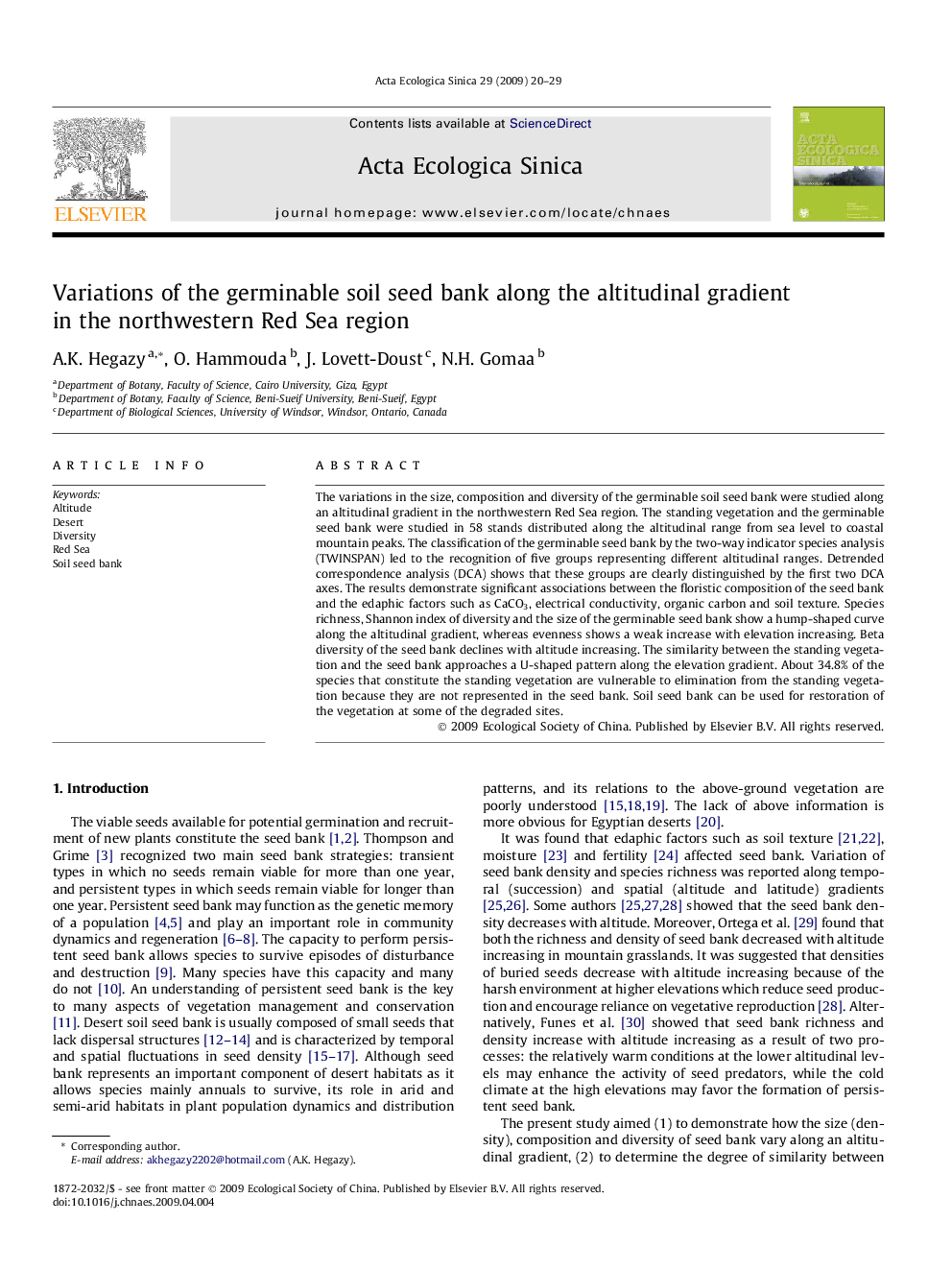| Article ID | Journal | Published Year | Pages | File Type |
|---|---|---|---|---|
| 4380236 | Acta Ecologica Sinica | 2009 | 10 Pages |
The variations in the size, composition and diversity of the germinable soil seed bank were studied along an altitudinal gradient in the northwestern Red Sea region. The standing vegetation and the germinable seed bank were studied in 58 stands distributed along the altitudinal range from sea level to coastal mountain peaks. The classification of the germinable seed bank by the two-way indicator species analysis (TWINSPAN) led to the recognition of five groups representing different altitudinal ranges. Detrended correspondence analysis (DCA) shows that these groups are clearly distinguished by the first two DCA axes. The results demonstrate significant associations between the floristic composition of the seed bank and the edaphic factors such as CaCO3, electrical conductivity, organic carbon and soil texture. Species richness, Shannon index of diversity and the size of the germinable seed bank show a hump-shaped curve along the altitudinal gradient, whereas evenness shows a weak increase with elevation increasing. Beta diversity of the seed bank declines with altitude increasing. The similarity between the standing vegetation and the seed bank approaches a U-shaped pattern along the elevation gradient. About 34.8% of the species that constitute the standing vegetation are vulnerable to elimination from the standing vegetation because they are not represented in the seed bank. Soil seed bank can be used for restoration of the vegetation at some of the degraded sites.
